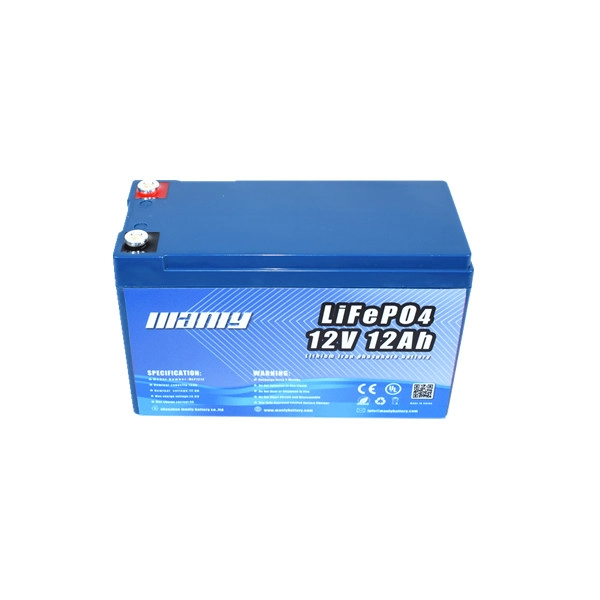2024 UPS Battery Guide for Uninterrupted Power
Table des matières
- 2024 UPS Battery Guide for Uninterrupted Power
- What is a UPS Battery?
- Different Types of UPS Battery Explained
- What are the Applications of UPS Batteries?
- Things You Are Not Supposed to Do With a UPS Battery
- Components and Structure of UPS Battery
- How Long Do UPS Batteries Last?
- What are the Pros & Cons of a UPS System?
- Effective Maintenance Tips for UPS Batteries
- Guide to UPS Battery Replacement and Proper Disposal
- Derniers mots
- En savoir plus sur la batterie
What is a UPS Battery?
A UPS battery is a rechargeable lead-acid battery wired to an uninterruptible power supply system so that it can provide immediate power to connected equipment in the event of a blackout or brownout. The battery allows the UPS to provide continuous, conditioned electricity to devices by seamlessly switching from wall outlet AC power to stored DC battery power.UPS batteries are designed for quick charging and discharging to supply backup power for short periods, usually 5-15 minutes for small consumer/office models and an hour or more for larger commercial units. This gives IT equipment and systems enough time to fully shut down during an extended power outage before the UPS batteries are drained.
Different Types of UPS Battery Explained
The two major types of UPS systems. The UPS batteries used on them are quite different from each other. Let’s take a look at them in detail.Standby UPS
Standby systems pass electricity directly from the AC outlet to connected devices during normal operation. If power is lost, it switches to the batteries. Standby units typically use sealed, maintenance-free lead acid batteries because of their durability and deep cycle performance. Popular lead-acid battery types include:- Valve-regulated lead acid (VRLA) - Uses a pressure relief valve to vent gases while keeping the battery sealed from leaks or spills. This maintenance-free design allows them to be safely mounted in any orientation.
- Absorbent glass mat (AGM) - Lead plates saturated in electrolyte are packed tightly between fibers of absorbent glass mats instead of submerged in liquid. This allows safe operation even when tipped on their side.
Online UPS
Online configurations constantly circulate power through the UPS’s voltage regulation and battery charging systems before sending it to attached electronics. This provides additional filtering and conditioning. Online UPS systems most often utilize valve-regulated sealed lead acid batteries because of their faster recharge capabilities to stay topped off between short discharges.Modern advances have brought lithium-ion batteries into many consumer and commercial UPS systems as well. Their fast recharge times, low maintenance needs, and compact size make lithium-ion batteries well-suited for supplying backup power in smaller units.What are the Applications of UPS Batteries?
The sole but invaluable purpose of a UPS battery is to provide temporary electric power from its stored reserves to keep critical systems and equipment powered on without interruption when mains electric service is lost.Some common examples of UPS battery powered loads during outages:- Computer workstations and servers
- Networking/telecom equipment
- Medical devices
- Alarm and security systems
Things You Are Not Supposed to Do With a UPS Battery
While UPS batteries serve a vital role for short term backup power, there are definite limits to what they are designed to handle:- Extended outages
- Motors/compressors
- Whole home or office
- Improper battery replacement
Components and Structure of UPS Battery
UPS batteries have the same basic components as normal lead acid batteries, specialized for high discharge/recharge duty cycles. Typical parts of a UPS battery:- Plates
- Terminals
- Case
- Vent caps
- Protection circuits
- Fuel gauge
- Communication lines
- Temperature sensor

How Long Do UPS Batteries Last?
UPS battery lifespan depends on several key factors:1. Battery Chemistry
The type of rechargeable battery technology inside the UPS determines total useful lifetime:Lead Acid - The most proven and economical UPS chemistry provides 3-5 years of life. Lead-acid can withstand 300-800 complete discharge/recharge cycles before capacity drops excessively, necessitating replacement. Gradual failure allows monitoring.Lithium-Ion - Higher energy density batteries found in consumer electronics enable 5-10 year lifespans in UPS systems but cost more up front. Lithium cells maintain consistent capacity for 1,000-2,000 cycles then abruptly stop working once truly depleted.Emerging Chemistries - New lithium technologies like lithium iron phosphate (LiFePO4) may unlock 10-15+ years of operation. Early testing demonstrates theories of 5,000-plus cycles without gradual degradation like lead acid. Could become mainstream in future UPS systems.2. Discharge Depth
Frequent complete discharges shorten lead-acid battery life faster than occasional shallow discharges that minimize strain. Lithium cells have greater depth tolerance over more cycles. Preventing overly drained states extends service years.Recharge Cycles Total number of lifetime discharge/recharge cycles affects longevity regardless of depth. More cycles equal faster cumulative wear. Grid instability causing frequent but shallow UPS battery usage consume overall cycles quicker than less frequent backup events allowing full recharges.3. Temperature
Heat accelerates chemical processes that degrade batteries over time. Maintaining a 68°F-77°F operating temperature gives the best UPS battery performance and keeps capacity high. Colder conditions may reduce initial power output but lengthen service years.Additional real-world UPS battery life factors like grid stability, outage length variability, and preventative maintenance impact overall replacement timing. But appropriately sizing units for the protected equipment load while monitoring usage helps maximize lifespan.What are the Pros & Cons of a UPS System?
Uninterruptible power supplies offer valuable protection but have limitations to consider depending on models and capabilities chosen:Pros:- Temporary battery backup power bridges gaps in electricity delivery from the utility grid during blackouts, brownouts and voltage fluctuations. This maintained power output prevents data loss and abrupt shutdowns of sensitive electronics.
- Advanced UPS units actively regulate voltage and provide surge suppression. This conditions incoming electricity to protect hardware from long term damage of routine power grid irregularities.
- For precision electronics like medical devices, UPS systems convert raw sine waves to clean pure sine wave power and tight frequency regulation. This prevents shutdowns from frequency variations.
- When combined with generators in a tiered redundancy approach, UPS batteries significantly extend the available generator runtime by first shouldering the load temporarily. This reduces prolonged generator fuel needs and wear.
- Modular or scalable UPS configurations allow tailored backup power designed around current IT load levels with the ability to expand battery capacity as future demands grow. This reduces upfront costs and waste.
- Advanced lithium-ion UPS chemistry lasts over twice as long as legacy lead-acid batteries, operates better in heat and allows more storage capacity in less physical space. This extends usefulness and runtime.
- Managed service providers can remotely monitor UPS systems and proactively respond to alerts predictive of potential faults. This maximizes uptime and planning of maintenance or upgrades.
- New eco-mode configurations place UPS hardware into standby to conserve electricity until the exact moment utility power fails and backup needs to engage. This saves long term energy costs.
- Total costs rise substantially - UPS systems bear not only significant purchase expenses but replacement battery expenses every 3-10 years depending on utilization levels.
- Like any complex electrical equipment, faulty UPS units pose reliability risks as an additional potential failure point over surge protectors. Carefully matching quality UPS systems to loads improves protection.
- Require regular maintenance like monitoring batteries for end of lifespan, annual runtime testing to validate capacity, cleaning contacts, etc. Higher capability units demand meticulous upkeep to deliver promised protection.
- Outage events exceeding designed battery backup time can still result in work interruptions if generators or utility power remains unavailable to recharge batteries keeping systems online.
Effective Maintenance Tips for UPS Batteries
Preventative monitoring and maintenance are key to maximizing UPS battery runtime and total operational lifespan. Recommended best practices include:1. Annual Discharge Testing
Perform annual automated or manual discharge tests under load to validate backup time still meets equipment shutdown requirements. Compare against baseline ratings to identify capacity degradation for replacement planning. Discharge testing helps determine if batteries are still capable of providing the expected amount of backup time to properly shut down connected equipment during a power outage.2. Monitor Usage Cycles & Loads
Log power events, discharge depths, and load levels over time to predict likely replacement timing based on cumulative strain. Watch for unplanned rises representing possible trouble like impending failures. Tracking battery usage patterns helps determine the actual cumulative load being placed on the batteries to estimate realistic timing for replacement before potential failure during a critical power event.3. Keep Batteries Clean & Secure
Clear dust buildup around battery assemblies and UPS airflow paths regularly as particulate accumulation can inhibit effective cooling. Check integrity of wiring connections occasionally for corrosion or looseness degrading circuit continuity to critical backup systems. Improper connections can increase resistance leading to equipment damage or failure to switch to batteries during an outage.4. Control Environmental Conditions
Maintain temperatures year-round between 68-77° Fahrenheit and stable humidity across operating life. Cooler conditions extend overall battery lifespan exponentially. Prevent direct heat or sunlight exposure on units. Batteries slowly lose charge capacity if consistently operated at higher temperatures. Keeping temperatures modulated year-round optimizes chemical processes during charging cycles.5. Test & Replace Defective Batteries
Periodically test a sampling of individual battery units under load to identify any with degraded capacity or signs of pending failure. Proactively replace defective batteries exceeding a 20% reduction in rated capacity. Waiting too long increases the risk of catastrophic failures during critical power events.6. Consider Periodic Full Replacements
For UPS systems with multiple strings of series-connected batteries, proactively replacing the entire set every 3-5 years reduces likelihoods of one defective battery affecting the entire string’s output. Staggered individual replacements can still leave systems exposed to sudden failures.7. Use Predictive Analytic
Monitoring Advanced battery monitoring systems with predictive analytics helps determine optimum replacement timing based on actual usage history versus relying on fixed lifetime estimates. This approach maximizes the useful lifespan of batteries before replacement.8. Adhere to Manufacturer Specifications
Always follow battery and UPS manufacturers’ recommendations for acceptable temperature thresholds, maximum discharge depths, recharge cycles, and required reconditioning intervals. Exceeding guidelines risks voiding warranties and reducing operational lifetimes.Guide to UPS Battery Replacement and Proper Disposal
With finite lifespans ranging from 3-10 years based on model, chemistry and usage levels, UPS battery replacement is a necessary cost of equipment ownership. Proper handling during swap out and recycling or disposal follows vital guidelines:- Evaluate via Testing & Order Replacements
- Engage Qualified Servicers
- Adhere to Transportation Regulations
- Identify Approved Recycling Channels
- Install & Test Replacements
- Annually perform discharge tests to baseline ongoing charge capacity versus initial ratings
- Continuously monitor usage cycles and load levels over time to estimate replacement timing
- Control ambient temperatures from 68-77°F and humidity for extended battery lifespans
- Periodically check battery wiring & connections for corrosion or looseness
- Regularly clear dust and debris off battery assemblies and surrounding UPS
- Test sample individual batteries over time to identify units with degrading performance
- Consider replacing entire sets after 3-5 years to avoid weaknesses developing
- Follow all manufacturer guidelines for operation, testing and replacements




















